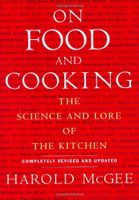Advertisement
Flavor Extraction
Appears in
By Harold McGee
Published 2004
For herbs and spices to provide us with flavor, cooks must find ways to liberate the flavor chemicals from within their tissue and convey them to our taste and odor receptors. For fragile herbs, this may be as simple as strewing the fresh leaves on the dish, as in Vietnamese soups: the eater liberates the aromas by chewing on the leaves, and enjoys them at their freshest. But if the flavors are to be incorporated into the dish, then the flavor compounds must somehow escape from the herb or spice. The cook may leave the flavoring intact and use liquids and heat to encourage the flavors to seep out gradually, or he may break it into particles—chopping fresh herbs, crumbling dry ones, grinding spices—to expose the flavor molecules directly to the dish. The finer the crumble or grind, the greater the surface area from which flavor molecules can escape, and so the more rapidly the flavor moves from flavoring into dish.


